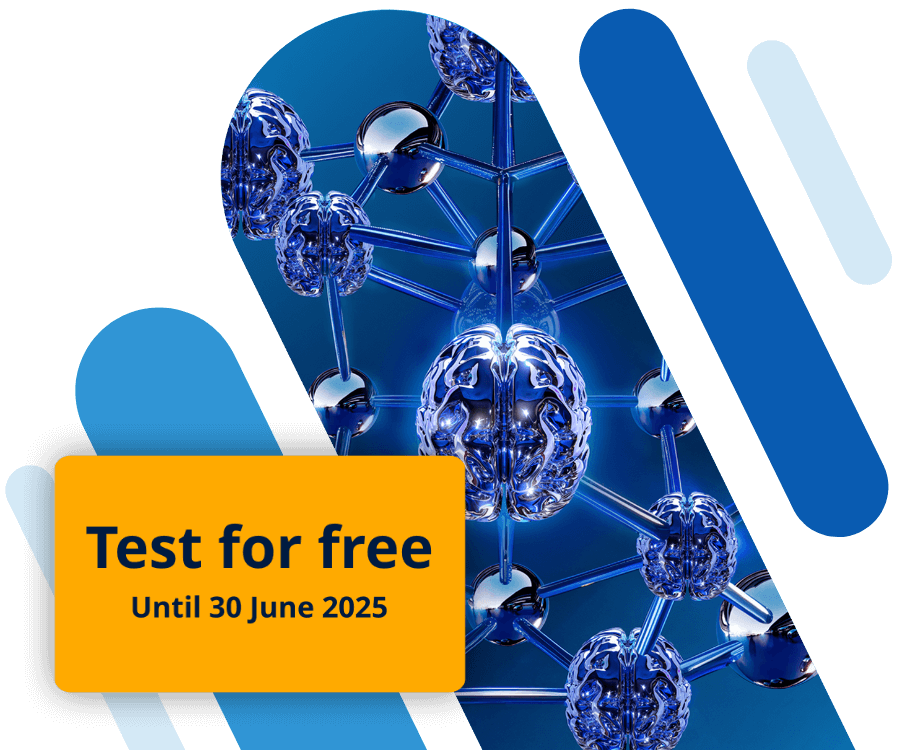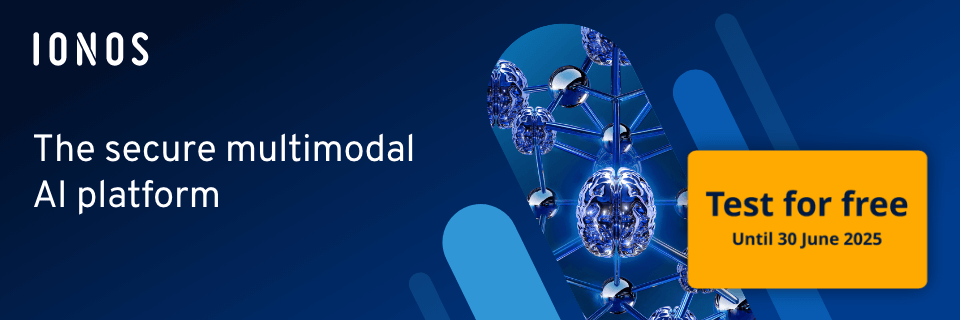What is a vector database?
A vector database is a type of database that stores, manages and retrieves data as high-dimensional vectors. Read on to find out more about how vector databases work and when they are used.
What does a vector database do?
As with traditional structured databases, vector databases can store many different types of data, including text, images and other types of media. The difference between the two lies in how the data is stored and queried. While data in regular databases is often stored in an indexed tabular format, data objects in vector databases are represented as high-dimensional numeric vectors. The values contained in a vector can be understood as parameters that each describe a property of the original data. In this way, data sets can be parameterised and then compared and bundled according to similarity metrics.
With vector databases, it is much easier to categorise and query data according to its rough properties. This is particularly advantageous for machine learning and deep learning systems.
- Get online faster with AI tools
- Fast-track growth with AI marketing
- Save time, maximise results
How do vector databases work?
Compared to traditional relational databases, vector databases offer many advantages in the field of artificial intelligence and machine learning. However, there are some challenges in storing and managing vector data. The first major challenge of these databases is the conversion of traditional digital data objects to numeric vectors that accurately represent the properties of these data objects. This is where vector embedding models come into play.
Vectors can be understood as coordinate points in a multidimensional space. The high-dimensional space where the vectors stored in a vector database are located is called vector embedding. To get from a digital data object to a corresponding vector embedding, you need a vector embedding model. A vector embedding model is a specialised machine learning model that analyses data objects and generates a suitable vector representation based on their meaning and context.
Let’s consider a vector database that stores and categorises words as an example. The words ‘Sushi’ and ‘Pasta’, despite their different spellings, share a similar semantic meaning. Therefore, the embedding model should produce similar vector embeddings for these words. To accomplish this, the model could analyse the textual contexts in which both words commonly appear.
Retrieving data from the vector database is done similarly to the process of entering data. The embedding model generates an appropriate vector (coordinate point in high-dimensional space) for the query. Specialised mathematical algorithms for vectors are then used to find the closest vectors. This approach allows for the retrieval of not only exact matches but also data objects whose vectors are similar to the query vector. For instance, if you query ‘food’, the results might include entries like ‘pasta’ and ‘sushi’. However, if you query ‘Japanese food’, the query vector will be much closer to the ‘sushi’ vector than to the ‘pasta’ vector.
What are the benefits of vector databases?
Vector databases such as ChromaDB offer a number of advantages over traditional relational databases that are particularly valuable for AI applications. We’ll discuss some of these in more detail below.
Efficient similarity search
By representing a data object as a point in a high-dimensional space, algorithms that specialise in vector processing can be applied. This allows for the rapid and efficient identification of nearby vectors (or thematically relevant content). This capability is crucial for applications like image recognition, where identifying similar images is necessary, and for recommendation systems that suggest similar products or content.
Performance and scalability
Vector database systems often use a whole range of techniques to efficiently accelerate query speed and data processing. In addition to the efficient processing of high-dimensional vector data, vector databases are often designed in such a way that many operations can be executed in parallel. The representation of complex data as vectors also allows the efficient handling of very complex data structures. Overall, these techniques contribute to the fact that vector databases can contain and process large amounts of data without a significant loss of performance.
Integration of machine learning models
Since neural networks often use vectors as input and output, many AI models can be seamlessly integrated into vector databases. This enables direct storage, management and querying of model output and input, which simplifies and accelerates the development and deployment process of AI applications.
- 100% GDPR-compliant and securely hosted in Europe
- One platform for the most powerful AI models
- No vendor lock-in with open source
Where are vector databases used?
One use case of vector databases that is very relevant today is machine learning and generative AI. In machine learning, vector databases are used to perform similarity searches, which is required for tasks such as classification, clustering and recommendation systems. Models can be trained to quickly identify similar data points and make predictions or decisions based on them. For example, a recommendation algorithm can be based on a vector database to suggest products or content to users that are similar to their previous preferences.
- Get online faster with AI tools
- Fast-track growth with AI marketing
- Save time, maximise results
In addition, vector databases can be used to accelerate the training of new neural networks. Vector databases make it possible to efficiently manage and search very large training datasets, which significantly improves both the accuracy and the training time of the model.
One specific application that benefits from this optimisation is generative AI models such as OpenAI’s GPT. These use vector databases to recognise complex patterns in data and create new content. The efficiency gain from vector databases is crucial to the performance of these systems.
A significant disadvantage of large language models (LLMs) such as GPT are the high training costs and long training times. Due to these two factors, LLMs cannot be regularly retrained with up-to-date data. One method of eliminating this weakness is retrieval-augmented generation (RAG). You can find out more about this technique in our article on the topic.



